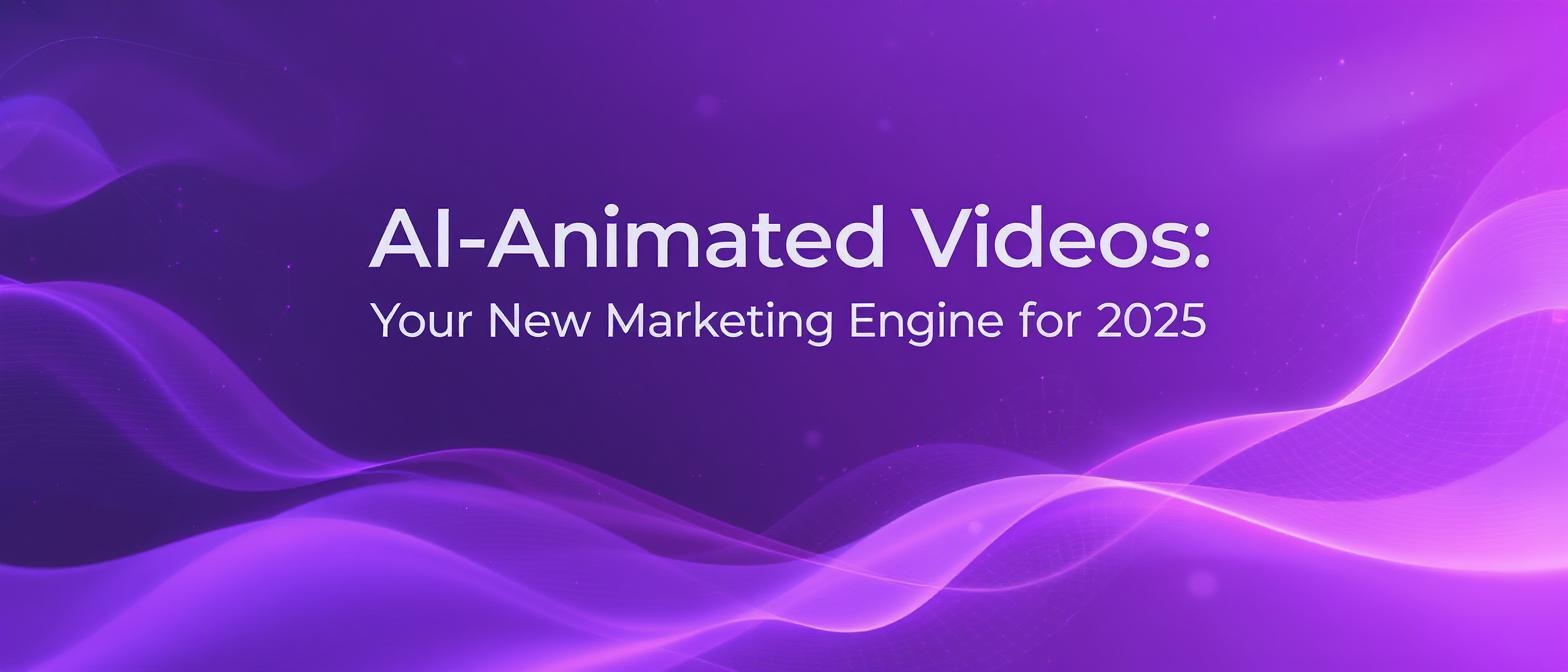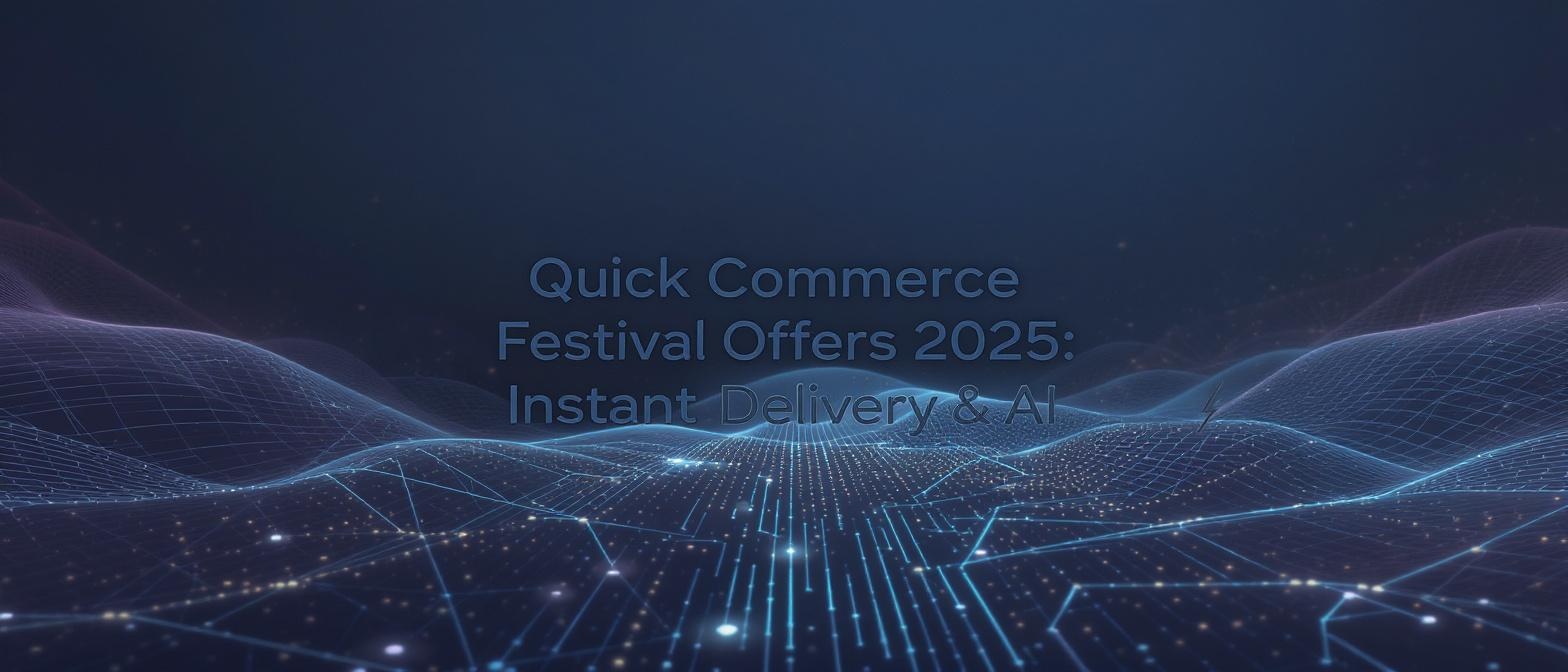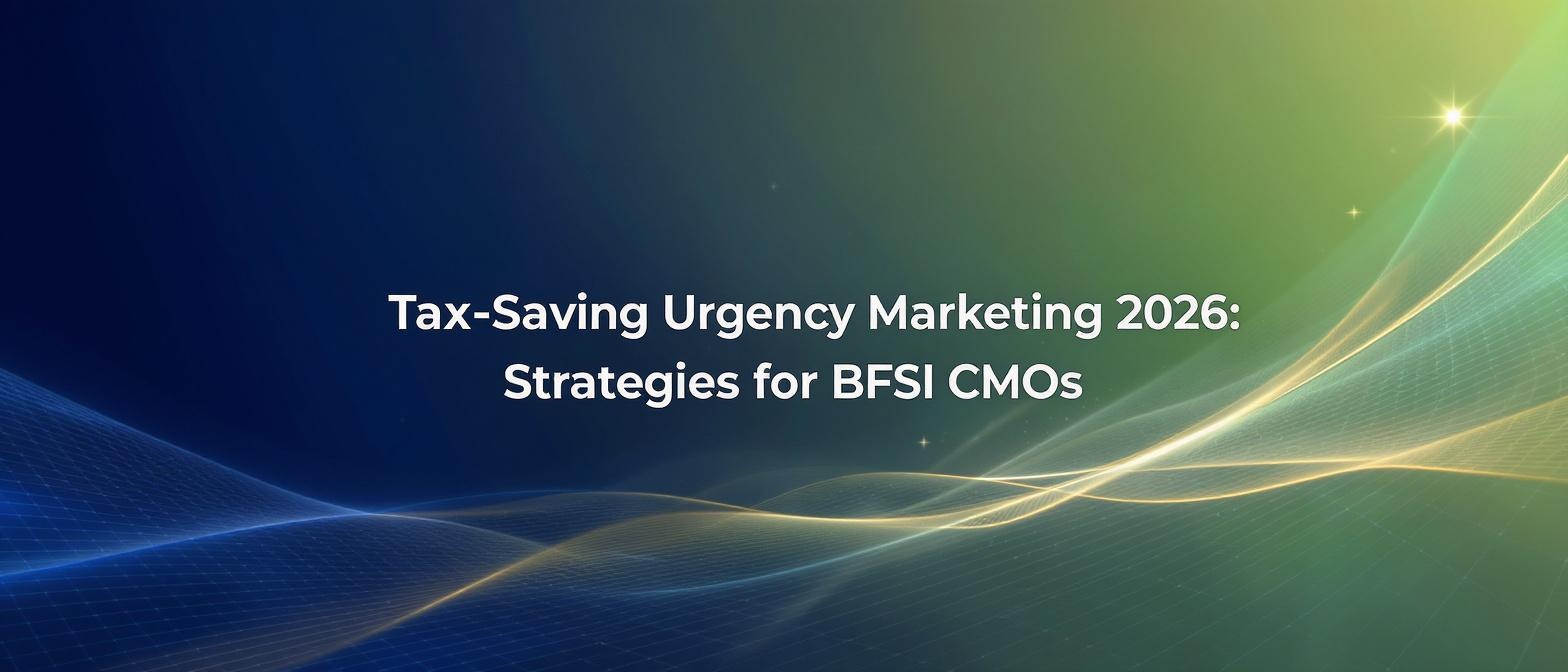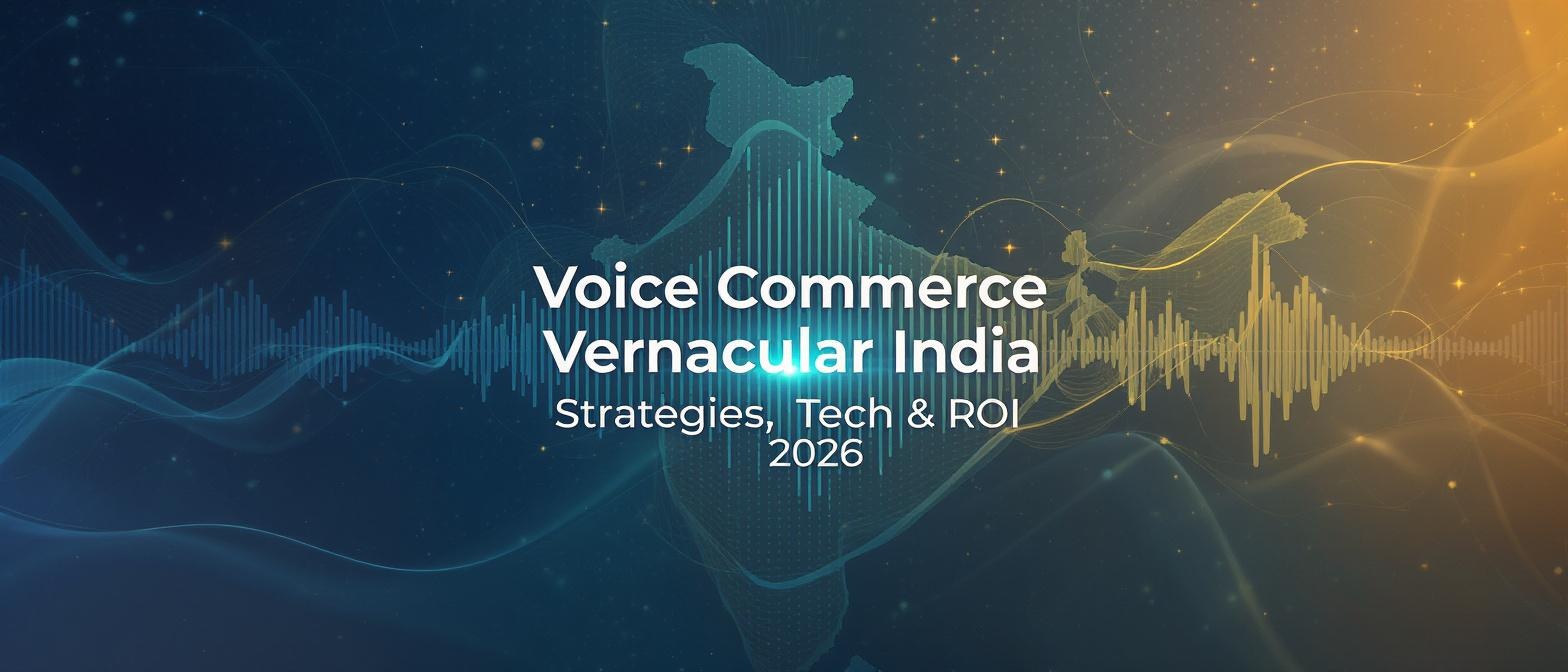Beyond the Hype: Why AI-Animated Videos Are Your New Marketing Engine
Estimated reading time: ~13 minutes
Key Takeaways
- AI video is shifting from mere content velocity to true content intelligence.
- Advanced platforms offer photorealistic avatars, multilingual lip-sync, and brand safety features.
- A structured implementation framework drives ROI and scalable personalization.
- Ethics and authenticity are critical to avoid deepfakes and creative homogenization.
- An ROI-driven approach proves business value with measurable metrics and cost savings.
In 2024, a staggering 88% of marketers believe they must adopt AI to stay competitive. Yet, many businesses remain stuck, viewing AI video as a novelty rather than a core strategic engine. While basic AI-animated marketing videos are becoming more common, most companies are only scratching the surface of what’s possible, leading to generic content that fails to connect and convert. The real challenge isn't just using AI; it's about leveraging it with precision to create hyper-personalized, scalable, and emotionally resonant content that drives measurable business growth.
This article moves beyond the introductory-level discussions you've read elsewhere. We won't just tell you that AI makes video production faster; we'll show you how it fundamentally reshapes your entire marketing workflow. We will dissect the advanced capabilities that separate leading platforms from the rest, provide a practical framework for implementation, and explore the critical, often-overlooked considerations of ethics and ROI. Prepare to see how AI animation is not just the future of advertising—it's the key to unlocking a new era of content intelligence and customer connection.
Section 1: Reframe the Challenge: From Content Velocity to Content Intelligence
The initial promise of AI in video was simple: speed and cost reduction. While true, this narrow focus misses the transformational shift from mere content velocity to profound content intelligence. The real challenge for marketers in 2025 isn't just producing more videos faster; it's about producing the right videos, for the right audience segments, in the right language, at the right moment.
Competitor content often stops at "AI saves time." But the deeper insight is that this saved time should be reinvested in strategy, not just volume. According to a 2024 CMI report, one of the biggest challenges for B2B marketers is aligning content with sales operations. This is where AI excels. Instead of one generic marketing video, AI enables the creation of dozens of variations tailored to different industries, pain points, and stages of the buyer's journey. Furthermore, with 44% of marketers now applying AI to content production, the competitive advantage no longer comes from simply using AI, but from using it strategically.
The goal is to create a content ecosystem that learns and adapts. Imagine an e-commerce brand that automatically generates a unique video for its top 100 products, each localized into five languages, with A/B tested scripts. This isn’t just fast; it’s intelligent, scalable, and directly tied to revenue. The paradigm shifts from a static, one-to-many broadcast model to a dynamic, one-to-one conversation, powered by data and executed by AI. This is the new frontier that goes far beyond simple animation.
Section 2: Innovation & Solutions: The Technology Driving the Revolution
To achieve true content intelligence, you need technology that goes beyond basic animation. While many tools can put text to video, the platforms leading the charge offer a sophisticated suite of features that enable genuine personalization and professional quality at scale. This is where the technical details matter.
A significant gap in competitor coverage is the lack of depth on the underlying technology. For instance, creating a video in another language isn't just about translation; it's about cultural and contextual nuance, delivered with perfect, believable lip-sync. This is a complex technical feat involving advanced machine learning models trained on vast datasets of human speech and facial movements. The result is a seamless viewing experience that builds trust, unlike poorly dubbed content which can immediately alienate an audience.
Platforms like Studio by TrueFan AI https://www.truefan.ai/blogs/ai-video-generator-text-speech enable this leap in quality and capability. They are not just "video makers"; they are integrated ecosystems for intelligent content creation. Key innovations include:
- Photorealistic, Licensed Avatars: Instead of cartoonish animations, these platforms use digital twins of real, professional actors. This provides a human touch that builds connection and credibility, something CGI-style avatars often lack.
- Advanced Lip-Sync Across Languages: The ability to generate video in over 175 languages with precise lip movements for each is a game-changer for global brands. This allows for authentic market penetration without the logistical nightmare of reshooting with local talent.
- Built-in Content Moderation: A crucial, often-ignored feature is the integration of real-time safety filters. These systems block profanity, hate speech, and other harmful content, protecting brand reputation and ensuring compliance—a critical concern as AI-generated content proliferates.
These technological pillars—realism, scalability, and safety—form the foundation of a modern AI video strategy, moving far beyond the surface-level capabilities discussed in most articles. For more insights on enhancing video quality, check out 5 AI Video Enhancement Techniques to Revolutionize Video Quality Improvement in 2025.
Section 3: Advanced Implementation: A Practical Framework for Success
Adopting AI video without a strategy is like having a Formula 1 car without a driver. To truly harness its power, you need a structured implementation framework. Competitor articles often praise the benefits but fail to provide a practical roadmap. Here is a four-step framework to move from experimentation to enterprise-wide integration.
Step 1: Foundational Audit & Goal Setting (Weeks 1-2)
- Analyze Performance: Identify your top-performing written content (blog posts, case studies, whitepapers) and your worst-performing video content. This is your starting point.
- Define KPIs: Don't just aim for "more video." Set specific goals: "Reduce cost-per-lead from video by 30%," "Increase landing page conversion rate for our Spanish-speaking audience by 15%," or "Generate 20 unique product demo videos for A/B testing this quarter."
Step 2: Pilot Program & High-Impact Testing (Weeks 3-6)
- Select a Use Case: Start with a high-impact, low-risk area. Good candidates include:
- Localizing an Existing Campaign: Take a successful English-language video and use an AI platform to recreate it for a new target market, like German or Japanese.
- A/B Testing Ad Creatives: Create 5-10 variations of a single ad concept, changing the hook, call-to-action, or even the AI avatar, to see what resonates most on platforms like Meta or LinkedIn.
- Leverage Platform Strengths: This is where specific features become critical. For example, with Studio by TrueFan AI's 175+ language support and AI avatars https://www.truefan.ai/blogs/ai-video-generation-roi-marketing, a global software company could create localized "how-to" videos for each of its key markets in a single afternoon. The goal is to prove ROI on a small scale.
Step 3: Develop a Content Intelligence Playbook (Weeks 7-9)
- Document What Works: Based on your pilot program, create an internal playbook. It should include:
- Optimal script length and structure.
- Which avatars or voice styles perform best for your brand.
- A workflow for scriptwriting, generation, and approval.
- Guidelines for using background images, branding, and captions.
- Integrate with Your Stack: Plan how the AI platform will connect with your existing marketing tools (e.g., CRM, marketing automation) using APIs or webhooks for automated, personalized video generation at scale.
Step 4: Scale & Optimize (Weeks 10 onwards)
- Expand Use Cases: Roll out the validated workflows to other departments: internal communications for corporate training, HR for recruitment messages, or sales for personalized outreach videos.
- Create a Feedback Loop: Continuously analyze performance metrics. Use the data to refine your playbook and inform future content strategy, creating a virtuous cycle of improvement.
Section 4: Overlooked Considerations: Ethics, Authenticity, and Homogenization
As we rush to embrace AI's efficiency, it's critical to address the complex issues that most "future of advertising" articles conveniently ignore. A truly superior strategy requires navigating the ethical landscape with foresight and integrity.
One of the most significant overlooked topics is content moderation and brand safety. The same technology that generates a marketing video can be used to create deepfakes or spread misinformation. Leading platforms tackle this head-on with "walled garden" approaches, implementing real-time filters that block harmful or political content and watermarking outputs for traceability. This isn't just a feature; it's a fundamental pillar of responsible AI implementation that protects your brand from reputational damage.
Another concern is the risk of creative homogenization. If every brand uses the same AI tools, will all marketing start to look and sound the same? This is a valid fear. The antidote is to use AI as a tool to enhance human creativity, not replace it. The magic happens when a brilliant human-written script is amplified by AI's ability to test and iterate. The brands that win will be those that develop a unique creative strategy, tone of voice, and visual identity, and then use AI to execute that vision with unparalleled scale and precision.
Finally, there's the question of authenticity. Audiences are smart. They can often sense when something is inauthentic. The key is transparency and quality. Using high-quality, photorealistic avatars based on licensed actors is far more authentic than using glitchy, robotic animations. Some brands may even find success by being transparent about their use of AI, framing it as an innovative way to deliver more timely and relevant information to their customers.
Section 5: ROI & Metrics: Proving the Business Value of AI Video
A core weakness in most discussions about AI video is the lack of a concrete framework for measuring Return on Investment (ROI). Vague promises of "better engagement" are not enough. A data-driven marketing team needs to prove financial value.
The ROI of AI video can be calculated with a simple, powerful formula: ROI = (Value Gained - Cost of Investment) / Cost of Investment
Let's break down the components:
1. Cost of Investment: This is more than just the platform subscription.
- Platform Fees: The monthly or annual cost of the AI video tool.
- Human Capital: The time your team spends writing scripts, generating videos, and analyzing results. (Note: This is significantly lower than with traditional production).
- Training & Onboarding: Initial time investment to learn the platform.
2. Value Gained: This is where AI's impact becomes clear.
- Direct Cost Savings: Compare the cost of generating 50 videos on an AI platform versus the cost of a traditional video shoot (camera crew, actors, studio, editors). Studies show AI video generation can reduce production costs by an average of 58%.
- Increased Conversion Rates: Track the conversion rate on landing pages or ads using AI-generated video versus those without. A 5% lift in conversions on a high-traffic page can translate to thousands in revenue.
- Market Expansion: Quantify the value of entering a new market. What is the potential revenue from the new Spanish-speaking or Japanese-speaking markets you can now target effectively?
- Increased Team Productivity: Measure the number of campaigns or tests your team can run per quarter. If your team can run 4x the experiments, they can find winning formulas 4x faster.
Solutions like Studio by TrueFan AI https://www.truefan.ai/blogs/ai-video-generation-roi-marketing demonstrate ROI through clear metrics. A business paying ₹2,999/month can calculate its return by tracking the leads generated from the 10 minutes of video it produces. If a single closed deal from a localized demo video is worth ₹50,000, the ROI is astronomical. This granular, metric-driven approach elevates AI from a creative tool to a quantifiable business growth engine.
Section 6: Future Roadmap: What's Next in AI Video Generation
Looking beyond 2025, the evolution of AI video will accelerate, and marketers must prepare for trends that competitors are not yet discussing. The future lies in deeper integration, greater autonomy, and hyper-personalization at an individual level.
1. AI-Driven Scriptwriting and Optimization: The next generation of platforms won't just generate video from your script; they will help you write the perfect script. By analyzing millions of data points on viewer engagement, these systems will suggest hooks, narrative structures, and calls-to-action optimized for specific platforms and audiences. They will function as a creative co-pilot, augmenting human ingenuity with data-driven insights.
2. Hyper-Localization and Cultural Nuance: Moving beyond simple language translation, future AI will incorporate cultural nuances. Imagine an AI avatar for a campaign in Japan using more reserved body language, or one for a campaign in Brazil using more expressive gestures. This level of cultural adaptation will make global marketing feel truly local, dramatically increasing resonance and effectiveness. For guidance on adding multilingual elements, refer to How to Add Text to Video: A Complete Guide to AI Video Text Overlays and Subtitles for 2025.
3. Interactive and "Choose Your Own Adventure" Videos: AI will enable the creation of dynamic, interactive video experiences at scale. A customer watching a product demo could ask the AI avatar questions in real-time or click to explore different features, creating a personalized journey within a single video. This transforms passive viewing into an active, engaging conversation.
To prepare, businesses should start building their "data muscle" now. The quality of your customer data and the clarity of your audience segmentation will be the primary drivers of success in this new era. Begin documenting what works, build a library of high-performing scripts, and choose technology partners who have a clear and ethical roadmap for these future capabilities.
Frequently Asked Questions
What are the biggest mistakes companies make when first adopting AI video?
The most common mistake is focusing solely on cost reduction while ignoring strategy. They produce generic, low-effort videos at scale, which perform poorly. The goal should be to use the efficiency gains to conduct more strategic experiments, such as A/B testing messages, personalizing content for niche audiences, and localizing for new markets.
How does AI-powered lip-sync work in multiple languages?
Advanced AI lip-sync models are trained on vast datasets of video showing native speakers of many languages. The AI learns the subtle mouth movements (visemes) associated with specific sounds (phonemes) in each language. When you provide a script, the AI predicts the correct sequence of mouth shapes and precisely maps them to the avatar's face, ensuring the visual output matches the audio track seamlessly.
Is using AI avatars ethical, especially if they look like real people?
This is a critical consideration. Ethical use hinges on consent and transparency. Leading platforms like Studio by TrueFan AI https://www.truefan.ai/blogs/creating-lifelike-custom-avatars use avatars that are either digital twins of real actors who have given explicit consent and are compensated, or they are entirely fictional creations. It's crucial to choose platforms that prioritize ethical sourcing and avoid unauthorized "deepfakes" to maintain trust and legal compliance.
Can AI-animated videos match the quality of traditional video production?
For certain use cases, yes, and they often exceed it in terms of scalability and personalization. While a multi-million dollar Super Bowl commercial still requires a human touch, AI is perfect for marketing and corporate communications like product demos, training videos, social media ads, and personalized sales messages. The quality of photorealistic avatars and voice cloning is now so high that it's often indistinguishable from a standard talking-head video.
How much control do I have over the final video output?
Modern AI video platforms offer significant creative control. You can typically choose from a library of avatars, select different tones for the AI voice, upload your own background images or videos, add branded overlays, and customize captions. While you're working within the platform's framework, there is ample room to ensure the final product aligns with your brand's visual identity and messaging.
What is the typical learning curve for a platform like Studio by TrueFan AI?
These platforms are designed for marketers, not video editors. The user interface is often intuitive and browser-based, similar to tools like Canva. A user can typically go from signing up to generating their first professional-quality video in under an hour. The core workflow involves simply selecting an avatar, pasting a script, and clicking "generate," making it highly accessible for teams without technical expertise.
Conclusion
The conversation around AI-animated marketing videos is maturing. It's no longer a question of if this technology will shape the future of advertising, but how deeply it will transform it. While surface-level discussions focus on speed, the real revolution is in strategic depth—the ability to move from generic broadcasts to intelligent, personalized conversations at an unprecedented scale.
By going beyond the basics, we've uncovered a more powerful narrative. The future belongs to marketers who reframe the challenge from content velocity to content intelligence, who master the advanced technology of photorealistic avatars and multi-language lip-sync, and who implement it all within a structured, ROI-driven framework. Critically, it belongs to those who navigate the ethical landscape with integrity, building trust through transparency and responsible platform choices.
Your next step is not just to "try AI." It's to conduct a foundational audit of your content and identify a high-impact pilot project. Choose a specific, measurable goal—like localizing your top-performing demo or A/B testing ad creatives—and use a sophisticated platform to execute it. This is how you build a future-proof marketing engine, one intelligent video at a time.





